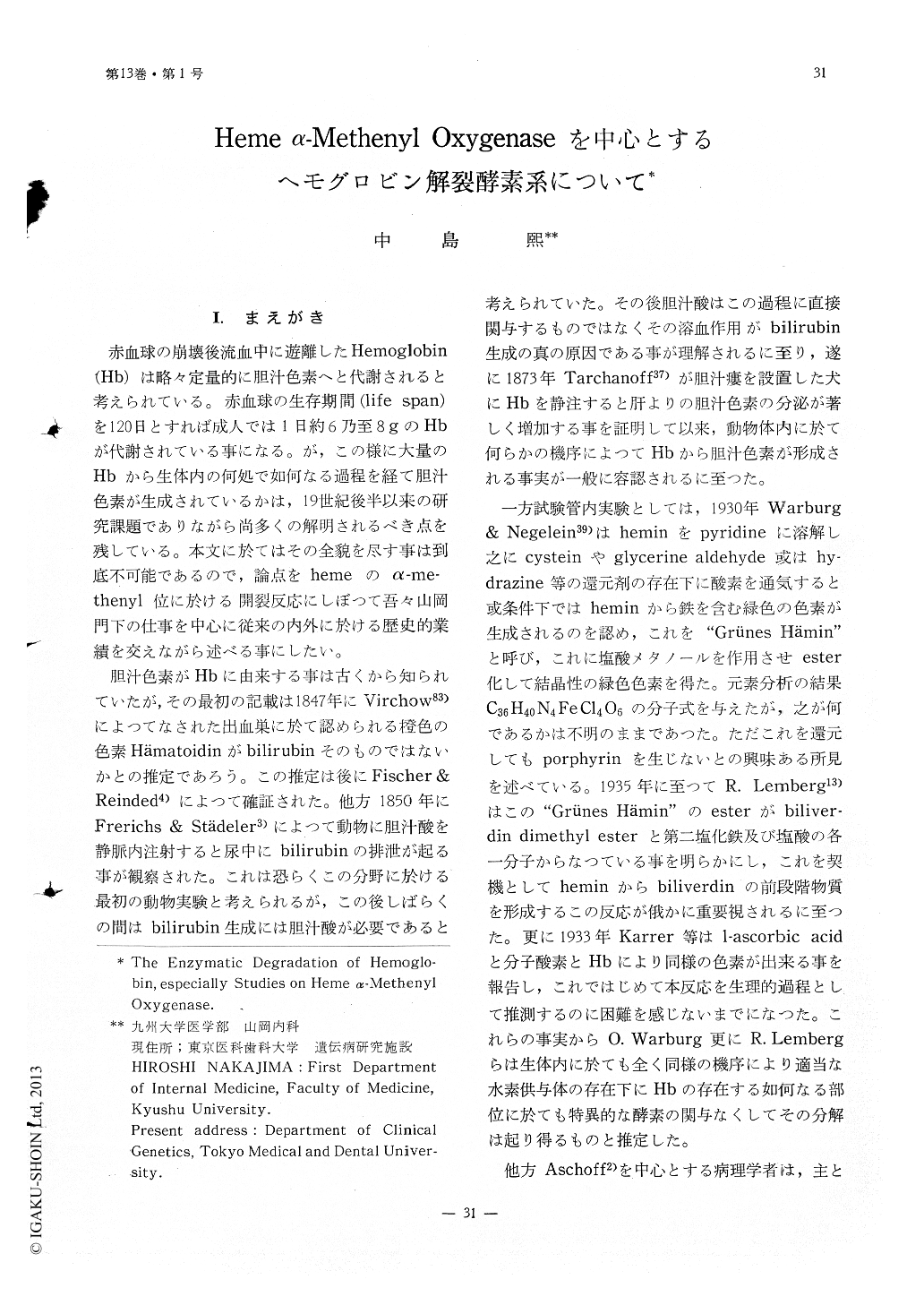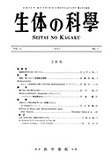Japanese
English
- 有料閲覧
- Abstract 文献概要
- 1ページ目 Look Inside
Ⅰ.まえがき
赤血球の崩壊後流血中に遊離したHemoglobin(Hb)は略々定量的に胆汁色素へと代謝されると考えられている。赤血球の生存期間(life span)を120日とすれば成人では1日約6乃至8gのHbが代謝されている事になる。が,この様に大量のHbから生体内の何処で如何なる過程を経て胆汁色素が生成されているかは,19世紀後半以来の研究課題でありながら尚多くの解明されるべき点を残している。本文に於てはその全貌を尽す事は到底不可能であるので,論点をhemeのα-methenyl位に於ける開裂反応にしぼつて吾々山岡門下の仕事を中心に従来の内外に於ける歴史的業績を交えながら述べる事にしたい。
胆汁色素がHbに由来する事は古くから知られていたが,その最初の記載は1847年にVirchow83)によつてなされた出血巣に於て認められる橙色の色素Hämatoidinがbilirubinそのものではないかとの推定であろう。この推定は後にFischer & Reinded4)によつて確証された。他方1850年にFrerichs & Städeler3)によつて動物に胆汁酸を静脈内注射すると尿中にbilirubinの排泄が起る事が観察された。これは恐らくこの分野に於ける最初の動物実験と考えられるが,この後しばらくの間はbilirubin生成には胆汁酸が必要であると考えられていた。
A new enzyme, heme α-methenyl oxygenase, which catalizes the transformation of pyridine-hemichromogen as well as hemoglobin-haptoglobin to a direct precursor of biliverdin, is demonstrated in beef and guinea-pig liver and characterized.
1) The enzyme activity is present predominantly in the liver and kidney, and is practically absent from the reticuloendotherial system such as spleen and bone marrow.
2) The enzyme is shown to be distributed in the supernatant fraction of beef liver obtained by the cell fractionation technic.
3) The enzyme was purified from an ace-tone powder of beef liver as a starting material through three steps of purification. The most purified enzyme preparation seemed to catalize all the steps in this process.
4) The enzyme protein, in a crude or purified state, was remarkably sensitive to atomospheric oxygen.
5) The enzyme required both TPNH and ferrous iron as its cofactors.
6) The reaction was inhibited by the addition of metal chelating agents as well as sulfhydryl inhibitors, but not by catalase.
7) The final reaction product was isolated as crystalline form. It is similar but not identical to verdohemochrome described by Lemberg following pyridine-hemichromogen's chemical degradation using ascorbic acid and oxygen.
8) The product dissolved in chloroform has shown four absorption bands in the visible spectrum at 397mμ, 495mμ, 530mμ, and 657 mμ.
9) The product forms a 2,4-dinitrophenyl-hydrazone and exhibits a positive Schiff's reaction and several other aldehyde reactions.
10) The crystalline product is easily convertible into biliverdin with the concomitant liberation of iron and formaldehyde.
11) In reference to the substrate specificity, hemoglobin-haptoglobin complex rather than free hemoglobin was found to be the reactive substrate in this enzyme system. The possible mechanism of hemoglobin degradation in vivo was also discussed.

Copyright © 1962, THE ICHIRO KANEHARA FOUNDATION. All rights reserved.


